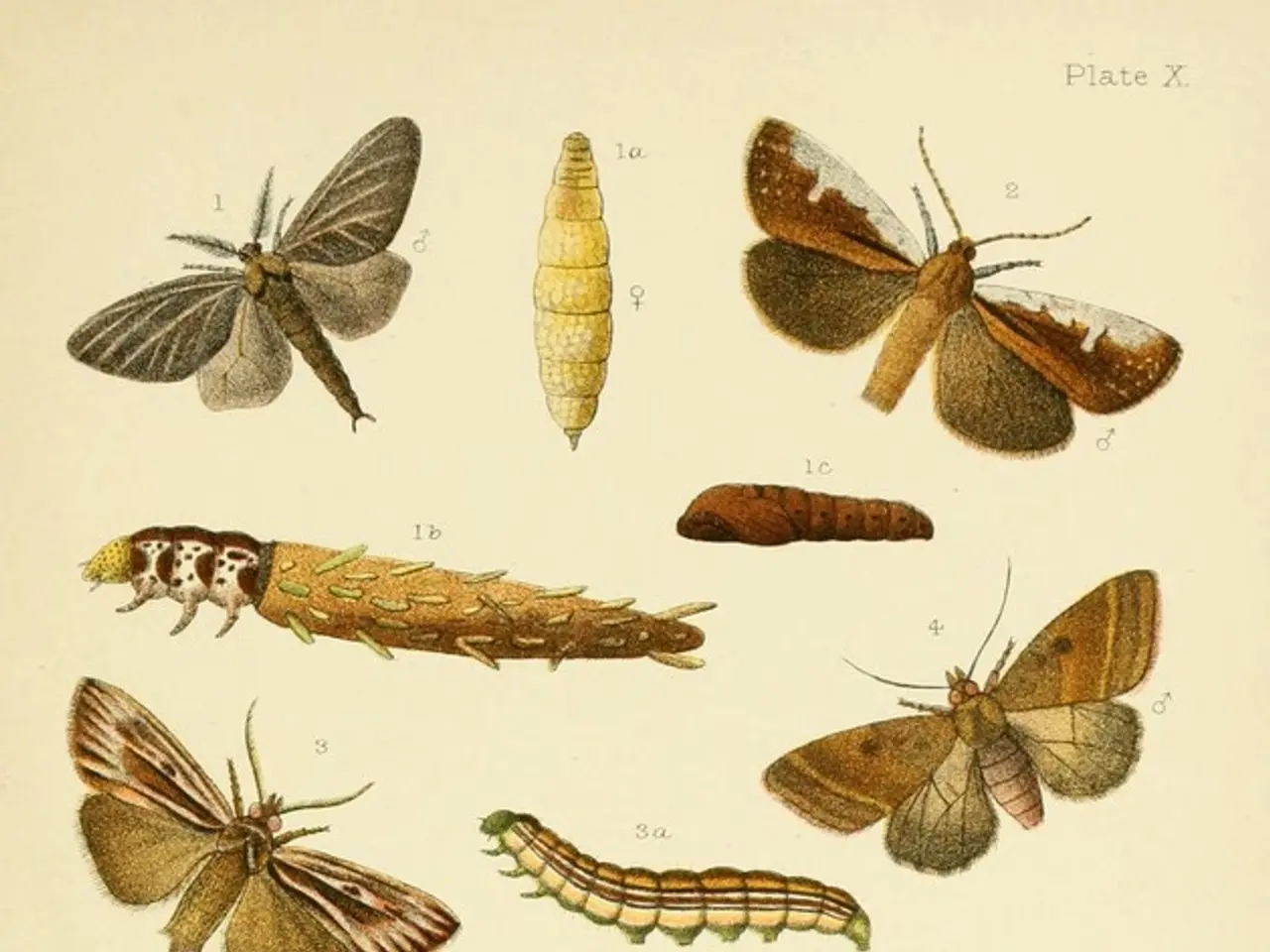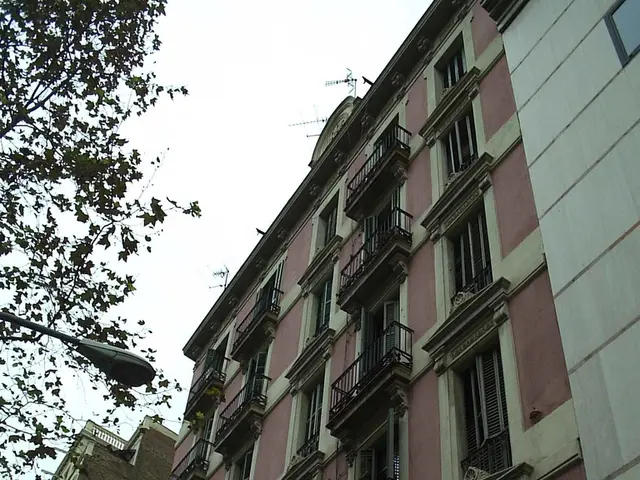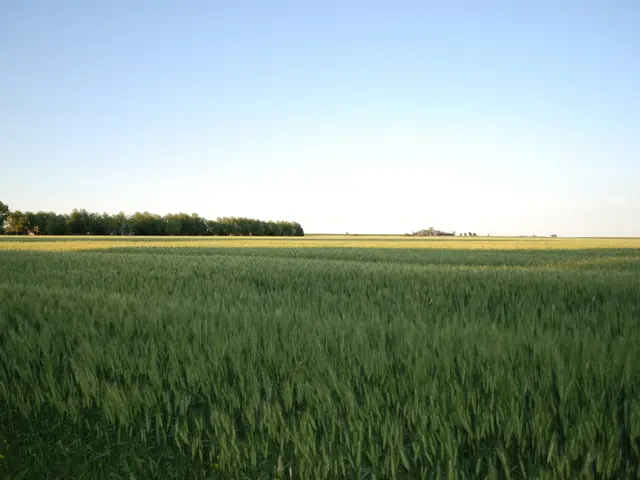Traditional practices and customs of Ahi Pepe
In the heart of New Zealand, a unique collaboration is taking place between science and indigenous knowledge, as Ahi Pepe MothNet embarks on a mission to understand the country's native moths.
For Māori, kaitiakitanga is an overarching concept regarding the care and guardianship of the environment. Every entity in the world, from the smallest insect to the mightiest tree, holds a mauri (life force) that is to be respected. This philosophy forms the core of Ahi Pepe MothNet's ethical approach.
Scientists at Manaaki Whenua - Landcare Research, a research institution dedicated to New Zealand's environment, collect and store various insect specimens, including moths, for reference collections. These collections are crucial for research and biosecurity purposes. However, when it comes to Ahi Pepe MothNet, a citizen science project focusing on New Zealand's native moths, their distributions, and the impact of vegetation restoration on moth diversity, a different approach was needed.
Students, teachers, and the wider community met to find a way to pursue the science in a way that would have minimal impact on their cultural beliefs. The result is an ethical framework that balances kaitiakitanga with the need for reference collections.
Ahi Pepe MothNet integrates principles of kaitiakitanga by engaging Māori as partners and knowledge holders in the curation and management of moth reference collections. Collection practices are sustainable and culturally appropriate, minimizing harm to local ecosystems. Knowledge exchange values indigenous perspectives alongside scientific methods, and capacity-building within Māori communities is actively supported.
Moths are quick and prolific breeders, so only taking a few of each species minimally impacts their numbers. Selected moths are chilled to lower their activity and make them more observable before being carefully pinned or stored. Type specimens, which provide a reference point for the future, are also collected.
However, it's worth noting that moths are euthanised in order to create these reference collections. Nevertheless, the collaborative and respectful partnership model used by Ahi Pepe MothNet ensures that this process is carried out with the utmost respect for kaitiakitanga.
The success of Ahi Pepe MothNet can be attributed to this collaboration and the blending of mātauranga Māori (Māori knowledge) and science. Schools working with Ahi Pepe MothNet also make reference collections, aiding students in identifying the different moth species in their local area. Students use Heath moth traps to collect moths for identification and study.
Museums like Te Papa Tongarewa and institutes like Manaaki Whenua - Landcare Research hold reference collections of animal and plant specimens, serving as records of species found at particular points in time. Having a physical specimen helps scientists ensure they are calling the same species by the same name. Museum collections hold 'type' specimens, which are the physical specimen of a new species as nominated by the author at the time of publication of the original description.
Knowing where different species are found also helps with conservation and biosecurity management. For instance, historical collections help scientists detect changes in the number and diversity of species that inhabit an area and evolutionary changes that may happen within species.
This ethical approach aligns with indigenous-led biocultural stewardship principles increasingly seen in New Zealand's biodiversity research programs. If you require more detailed, precise documentation of Ahi Pepe MothNet’s policies, consulting their official publications or New Zealand biodiversity ethics guidelines would be advisable.
The Ahi Pepe MothNet project received funding from various sources, including the Otago Science into Action, Participatory Science Platform, Curious Minds initiative, Manaaki Whenua - Landcare Research, Te Kura Kaupapa Māori o Ōtepoti, Te Rūnanga o Ngāi Tahu, Te Tumu, University of Otago, Department of Geography, University of Otago, Orokonui Ecosanctuary, Otago Museum, New Zealand's Biological Heritage National Science Challenge, and the government's national strategic plan for Science in Society, A Nation of Curious Minds - He Whenua Hihiri i te Mahara.
In conclusion, Ahi Pepe MothNet's approach to balancing kaitiakitanga with the development of moth reference collections is a shining example of how science and indigenous knowledge can work together harmoniously. By respecting the cultural values and beliefs of Māori communities, while promoting scientific research, Ahi Pepe MothNet is fostering mutual respect and shared guardianship over moth species and their habitats.
Education and self-development can be enhanced through the learning process of Ahi Pepe MothNet, a citizen science project that integrates principles of indigenous knowledge (kaitiakitanga) with the study of environmental-science, specifically native moths in New Zealand.
The collaborative approach taken by Ahi Pepe MothNet, which engages Māori as partners and knowledge holders in the curation and management of moth reference collections, offers a culturally appropriate and ethical framework for the advancement of science while upholding respect for Māori cultural beliefs.




